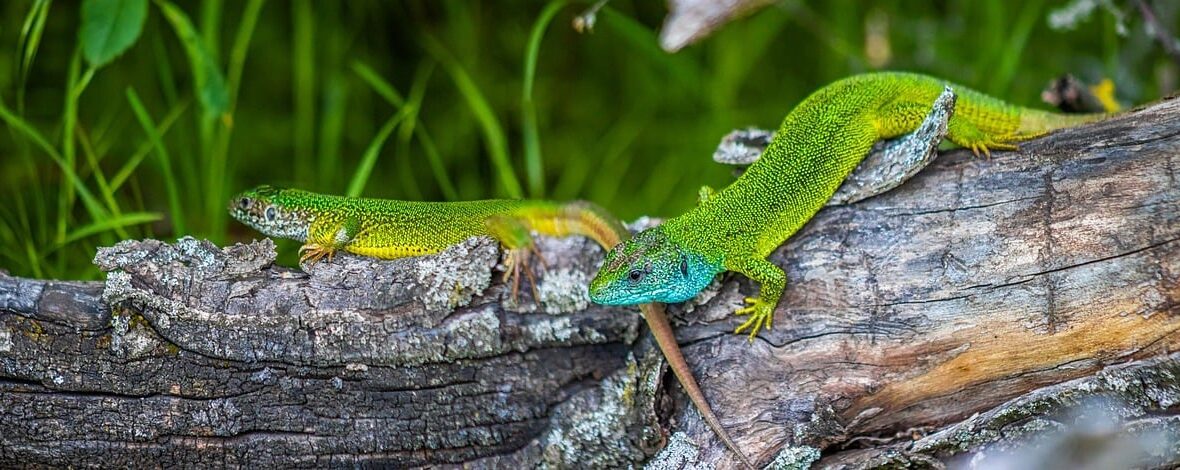
The European green lizard is a wide-spread reptile species found throughout many Eastern European countries. These lizards prefer a variety of habitats, including: thick bushy vegetation found in bramble thickets, embankments, field margins, hedgerows, and open woodlands. Even though they face the threats of habitat loss, secondary poisoning, and invasive species (and with them predation), these lizards are still listed as Least Concern by the IUCN. However, their numbers are decreasing.
First the Stats…
Scientific name: Lacerta viridis
Weight: Up to .55 ounce
Length: Up to 16 inches, including tail
Lifespan: Up to 16 years
Now on to the Facts!
1.) These lizards are typically out and about from March to the beginning of October.
2.) European green lizards are diurnal (active during the day).
3.) A group of lizards is called a lounge.
4.) Like other lizards, they are solitary and only come together to breed.
5.) These critters are capable of digging burrows up to 3.28 feet.
But wait, there’s more on the European green lizard!
6.) Their primary predators are cats, snakes, and birds of prey.
7.) They prey on a variety of insects, various invertebrates, birds eggs, fledglings, small lizards, pinky mice, and fruit.
Did you know…?
Like many other lizards, these creatures are capable of caudal autotomy (dropping their tail) when faced with a predator.
8.) Breeding season lasts from May to the beginning of June.
9.) Females lay up to 20 eggs that hatch in up to 4 months.
10.) Newly hatched lizards only measure up to 1.6 inches long, but quickly double in size by the following year.
Now a Short European Green Lizard Video!
Be sure to share & comment below! Also, check out the Critter Science YouTube channel. Videos added regularly!
Want to suggest a critter for me to write about? Let me know here.
Some source material acquired from: Wikipedia & IUCN



